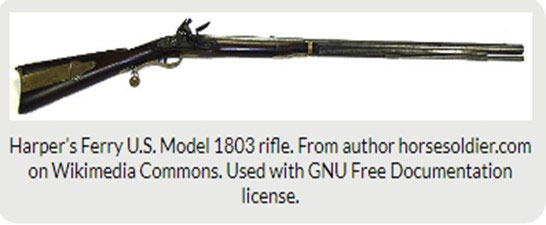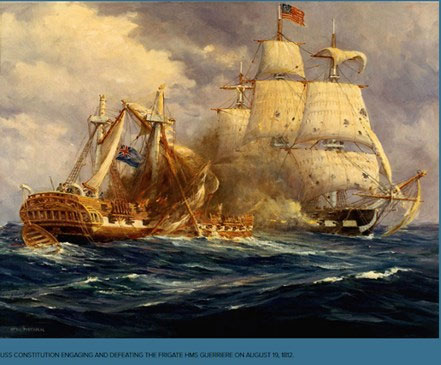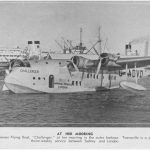Chesapeake Bay Local Areas of Interest [March 2019 Edition]
Since we will be visiting the time period of the War of 1812 in later LOCAL AREA articles, we was felt that a prequel would be of some help for you to understanding the conditions that existed during that time period of our nation’s history.
War of 1812
 The American Revolution ran from 1775 to about 1783, though the main fighting ended in 1781 after the Battle of Yorktown. So there was a 30-year span between the end of one war and the beginning of another. By the start of the War of 1812 which was also caller the Second Revolution that ran from June 18, 1812 thru Feb 17, 1815 the city of Washington had been established. The United States had completed the Louisiana Purchase, more than doubling the size of the country’s borders, and added the states of, Kentucky, Vermont, Tennessee and Ohio to the original 13, with Louisiana admitted in April of 1812, just before the war began that June.
The American Revolution ran from 1775 to about 1783, though the main fighting ended in 1781 after the Battle of Yorktown. So there was a 30-year span between the end of one war and the beginning of another. By the start of the War of 1812 which was also caller the Second Revolution that ran from June 18, 1812 thru Feb 17, 1815 the city of Washington had been established. The United States had completed the Louisiana Purchase, more than doubling the size of the country’s borders, and added the states of, Kentucky, Vermont, Tennessee and Ohio to the original 13, with Louisiana admitted in April of 1812, just before the war began that June.
After independence, the United States was a weak, fairly undefended country, dependent on the good will of others to make its way in the world. Once Napoleon seized power in France, and the subsequent war with the British, both of those countries took advantage of our weakness to attempt to hurt the other. France banned American goods and ships from traveling to England (fairly unenforceable, given the fact that the French navy was in shambles), and the English banned American ships and goods from France. In order to feed the ever-present need for sailors in the alwaysexpanding Royal Navy, the British thought nothing of stopping American ships at sea and taking (impressing) sailors to serve in their ships. It was discovered that the British command had the Native Americans as allies and were suppling them with guns and ammunition to suppress the westward expansion of settlers and farmers into the northwestern areas that were granted over to the United States by the British at the end of the revolution.
 These issues eventually lead to another war between the United States and the Great Britain. The Americans started that war with a navy that had few ships, though these were of very high quality, and with no other armed forces worth mentioning. The War of 1812 surprised everyone, as the tiny American fleet quickly won a series of stunning victories in single-ship actions against comparable British ships. That, and a series of back and forth invasions of Canada and the upper United States by one side or the other, kept the war going till 1814, when, having finally beaten Napoleon, the British came to the Chesapeake for the knockout blow.
These issues eventually lead to another war between the United States and the Great Britain. The Americans started that war with a navy that had few ships, though these were of very high quality, and with no other armed forces worth mentioning. The War of 1812 surprised everyone, as the tiny American fleet quickly won a series of stunning victories in single-ship actions against comparable British ships. That, and a series of back and forth invasions of Canada and the upper United States by one side or the other, kept the war going till 1814, when, having finally beaten Napoleon, the British came to the Chesapeake for the knockout blow.
They burned Washington, but couldn’t get far beyond that, as their real target, Baltimore, was a tougher nut to crack. Giving up on the Chesapeake, they went down to New Orleans to try again. The American victory at Baltimore jolted the peace negotiators forward in Ghent, Belgium, and a peace treaty was signed before the huge fight on the banks of the Mississippi River took place on January 8, 1815. The British Army was soundly beaten there by the American force under General, later President, Andrew Jackson. That battle, the repulse of the fleet and army in front of Baltimore, and the string of naval victories at sea and on lakes Erie and Champlain established the United States as a country to be respected militarily. That war marked the rise of the U.S. Navy as a player on the world stage and gave America a tradition of victory that continues to this day.



